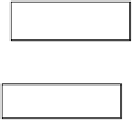Geoscience Reference
In-Depth Information
16 COASTAL ENGINEERING
A
HYDRO
-
GEODYNAMICS
Hydro-geodynamics in porous media refers to the mechanical response of
granular sediments when exposed to hydro-dynamic loading, i.e. water waves,
wave impacts, tides and earthquakes. Geotechnical aspects under such conditions
include: critical cross-sections and material parameters, wave/earthquake loading,
dynamic pore pressures, excess pore pressures, pore pressure build-up and
liquefaction, hydraulic (internal) filter stability, dynamic stability and residual
deformation. In this chapter these aspects are outlined to some extent.
10
8
I
6
R'
II
4
III
2
I
Quarry rock, sharp, rough
II
Moraine, angular, rough
III
Fluvial, rounded, smooth
0
0.15
0.20
0.25
0.30
0.35
0.40
0.45
porosity
n
, after compaction
Figure 16.1a Equivalent roughness R'
1.0
plane test
0.8
S'/
c
0.6
0.4
triaxial test
0.2
10
100
D
50
particle size [mm]
Figure 16.1b Equivalent strength S';
c
is the uniaxial rock compression strength
Rock friction
Since coastal structures usually involve coarse filter layers (stones and rock) the
corresponding internal friction angle needs some concern. Barton's formula reads
=
0
+ R'
log
(
S'/
'
)
(16.1)











Search WWH ::

Custom Search